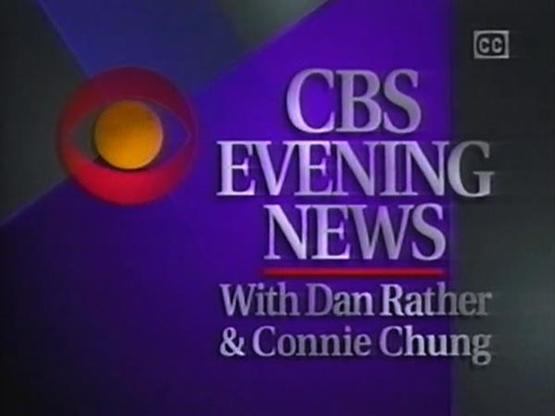In May 1993, CBS announced another transition: Connie Chung was selected to become co-anchor on the CBS Evening News, the first time the network had two anchors. Coming back from reporting in Somalia, an experience that profoundly marked him, Rather expressed the desire to do more field reporting, and the only way to do that was for him to work with a co-anchor at the Evening News. Some suggested that the move was connected to Rather finishing second behind ABC in the ratings, and that bringing Chung, who had the highest Q or popularity rating of any woman in network news, would make CBS News more competitive. CBS and Rather insisted, however, that ratings were not a consideration, and that the move was an effort to modernize the Evening News, to make it “more modern, more exciting, more relevant.” Advertisements for the new team emphasized that having two anchors would enable more coverage of breaking news and that viewers would now get "real news from real reporters."
Connie Chung debuted on June 1, 1993, on the CBS Evening News with Dan Rather and Connie Chung. Despite an emphatic embrace by CBS News Chief Eric Ober and heavy-handed promotion of the new team as changing the definition of news, the dual-anchoring received bad reviews and bad ratings. It was regarded by many as a failure, marked by bad chemistry between its anchors. After Chung, instead of Rather, was sent to the site of the Oklahoma City bombing, tensions increased, and Chung was eventually removed from the anchor chair. The breakup was acrimonious, with charges of sexism and lack of professionalism.


